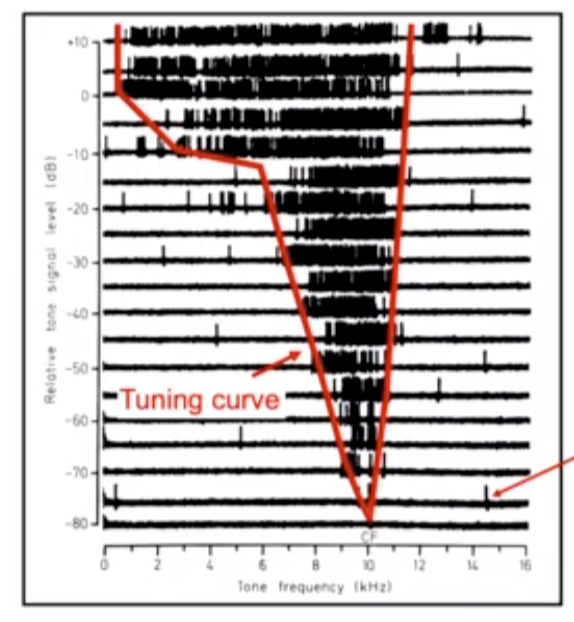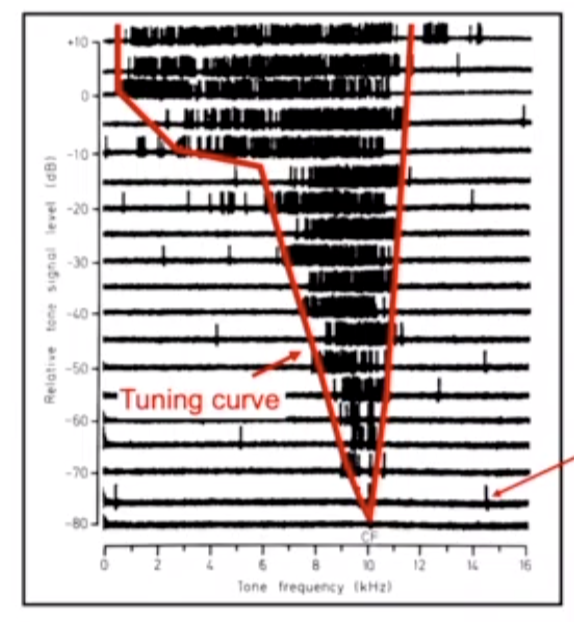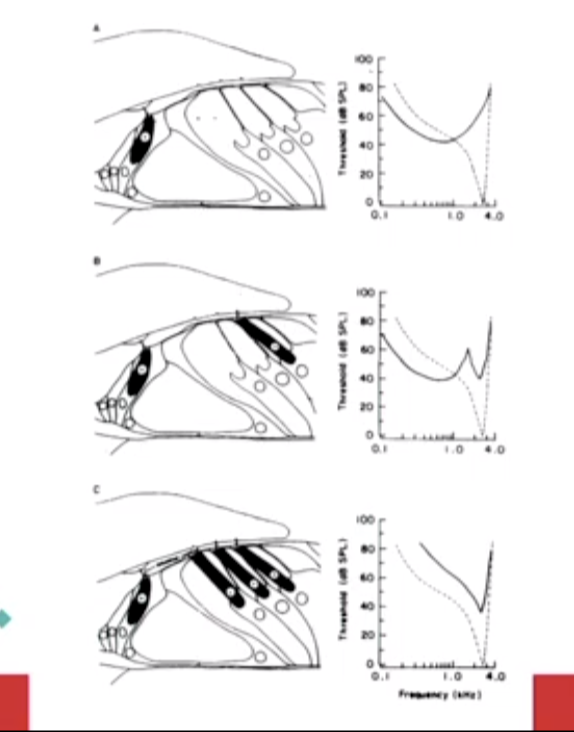Journey from hair cells to the brain
1/23
There's no tags or description
Looks like no tags are added yet.
Name | Mastery | Learn | Test | Matching | Spaced |
|---|
No study sessions yet.
24 Terms
Step 1: Neurotransmitter binding
the neurotransmitter material is released from the hair cell base to receptors on the auditory nerve fibers
Step 2: action potentials (nerve impulses)
neurotransmitters trigger an electrical signal in auditory nerve fibers
the signal travels along the length of the nerve fibers in the form of an action potential
If an action potential is being triggered…
that means neurotransmitters are released and the stereocillia is bending to the tallest tip link
When the stereocilia is bending towards the tallest tip link (excitation, depolarization)
the basilar membrane moves up
When stereocilia is bending towards the shortest tip link (inhibition, polarization)
the basilar membrane moves down
If enough neuro material is released
action potentials are also released
Low frequencies are closer
to the apex
Auditory nerve fibers are
tonotopically arranged
and connected to the basilar membrane
Electrical impulses represent
encoded auditory information and are transmitted to the brain
Threshold for activation
in order for an action potential to be generated, a threshold must be reached
this threshold is a critical level of depolarization (increase in positive charge inside the cell) that must be achieved through the opening of voltage-gated ion channels
Increased number of “spikes”
during depolarization
Decreased number of “spikes”
during hyperpolarization
What are action potentials?
electrical signals that travel along the auditory nerve to the brain
Each auditory-nerve fibre
responds only to a narrow range of frequencies

If signal level is lower on the graph
the threshold is lower (you are more sensitive to it)

Noise exposure
when the narrow v shape curve becomes more flat, it starts to become difficult to hear lower sounds
you have frequency smearing

Synaptic transmission to auditory fibers
the action potentials generated in the auditory nerve fibers travel towards the brain through the auditory pathways
these pathways relay auditory information from the cochlea to various regions of the brain, including the auditory cortex, where sound perception and interpretation occur
What is the stage of the afferent auditory pathway immediately following the cochlear nucleus?
superior olivary complex
auditory processing
once the electrical signals reach the auditory cortex in the brain, they are processed and interpreted
the brain analyzes various aspects of the sound, such as frequency, intensity, and spatial location, to create our perception of the sound
Tonotopicity
it starts in the basilar membrane, where sound waves are deconstructed into their frequencies
different frequencies activate different regions along its length
auditory nerve coding
each auditory nerve fiber is most responsive to a specific frequency range
tonotopic organization continues through the auditory pathway
temporal coding
the timing of action potentials (nerve impulses) in response to sound plays a role in distinguishing
the brain can detect the timing of neural responses to different frequencies
spatial processing
the brain processes auditory information from both ears to determine the direction and location of sound sources, aiding in the separation of different sound sources in space
selective attention
our ability to selectively attend to specific sounds or frequencies enables us to focus on one source of interest while filtering out others